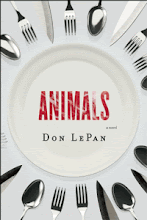When I was young, the worlds my parents had inhabited before I was born seemed strange and impossibly distant. The 1930s and 1940s were a world that had to be imagined, not a real one. And imagining it was no easy business.
It’s hard to be sure exactly when that changed—and how and why it changed. As the years went by I listened to my parents’ stories (especially, my mother’s stories) more and more, and found I enjoyed hearing more and more about the 1930s and 1940s, and was almost beginning to “feel” something of those decades myself. By the time I was into my forties and early fifties (in the 1980s and 1990s), there was no question about it anymore; the world had not begun in 1954.
Is one’s capacity for this sort of strongly connected historical imagination simply a matter of getting older oneself? Might it in some small part also have to do with having reached the age your parents were when you were young—and/or having children yourself, or interacting with children a good deal?
I don’t know the answers to those questions, but I do know that I am curious to find out if my strongly connected historical imagination will start to extend further backwards in time as I become older (and, perhaps, have grandchildren). Will the stories my grandfather told to his grandchildren in the 1960s and 1970s start to become much more palpably real? Will the 1890s become as real for me as the 1930s and 1940s have now become?
The relevance of all this to Rising Stories is of course the part of the book in which K.P’s life in Winnipeg and Chicago in the late 1930s is recounted. I was interested to find that writing about that era now comes entirely naturally to me; it feels real in a way I can directly connect to (as the Edwardian era or the Victorian era does not).
I wonder if it might be fruitful to look at historical fiction as falling into one of three categories. In one category—historical fiction that the author bases at least in part on first-hand memories—we may put works such as Hardy’s The Mayor of Casterbridge (set in the 1840s, when Hardy was a young child), and Wharton’s The Age of Innocence (published in 1921 but set in the 1890s, when Wharton was in her thirties). In a second category we may put works that may be based at least in part on the sort of second-hand memories we build from what our parents or others of their generation have told us. In that category we would put, for example, Tolstoy’s War and Peace (written in the 1860s, when Tolstoy was in his thirties, but set roughly fifteen years before his birth in 1928). Ishiguro’s The Remains of the Day would be another novel in that category. (Should there also be a 2(b) category of books comprising works partly based on the sort of second-hand memories we may build from what our grandparents have told us?) Then of course there is a large third category: what one might call pure historical fiction (Waverley, Wolf Hall, and so on).
Insofar as I’ll ever be a writer of historical fiction, it’s in the first and second of these categories—I can’t fathom trying to fully imagine a historical world that I haven’t at least heard people tell me about. Which may seem odd in the case of Rising Stories, because neither my mother nor my father ever told me about Chicago in the 1930s—or any other era. Indeed, I’m not sure if either of them ever went there. I do remember that my mother (very much a New Yorker, though she lived much of her life in Toronto and Ottawa) would say the world “Chicaaaago” with a loud, long stress on the middle syllable, and with the same sort of dismissive tone that she would adopt when speaking of other places that were impossibly far away and that one would never go to by choice. (“Way the hell and gone, in Brooklyn” was the paradigm.) What makes the world of the pre-war American city half real to me is the stories she would tell not of Chicago, but of New York.
No. Of Manhattan, I should rather say.
Saturday, August 22, 2015
Rising Stories and Second Hand Memories
Subscribe to:
Post Comments (Atom)





No comments:
Post a Comment
Comments welcome!